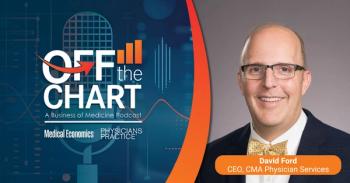
Mining EHR data for quality improvement
Many physicians doubt that electronic health records (EHRs) improve the quality of care. But relatively few practices are mining their EHR data to see how well they’re doing or to update their care delivery processes.
Many physicians doubt that electronic health records (EHRs) improve the quality of care. But relatively few practices are mining their EHR data to see how well they’re doing or to update their care delivery processes. Most are collecting data mainly for external reporting purposes, usually with the help of automated EHR features.
According to a recent study in
There are several possible reasons for the low interest in mining data for quality improvement. Most physicians believe they’re already doing a good job, and they may feel they’re too busy to devote time to running reports and looking at data. Especially if they’re working in small practices, they may feel intimidated by the technical requirements of data mining. It’s also difficult for providers to enter data consistently in the right EHR fields so that they have enough data to yield solid information on individual patients or populations.
Related:
With the growing use of value-based reimbursement, however, practices find themselves under increased pressure to prove that they are providing high-quality care to patients. At the same time, payers’ are emphasizing population health management, which requires practices to identify care gaps and reach out to those who need care, regardless of whether they’ve been seen recently.
Experts and doctors interviewed by Medical Economics say data mining is vital to helping practices meet those objectives. Each practice must find an approach that fits its needs and goals; but whatever that is, the sooner you get started, the better off you’ll be in the long run.
Data mining options
Health IT experts advise practices to take a close look at their EHR’s capabilities before thinking about using outside solutions or outsourcing. In many products, these capabilities include health maintenance alerts and report writers.
Health maintenance alerts, which are reminders about preventive or chronic care services that are recommended for a particular patient, pop up whenever an electronic chart is opened. While their use may not be considered data mining, when you create a new health maintenance alert, you are, in effect, mining your EHR data for a purpose.
It’s difficult to program new health maintenance alerts in most EHRs, says Ernie Hood, senior director, research and insights, for the
Related:
Another method of data mining is to run the reports available in the EHR or to write the reports you want and then run them. This is an area where EHRs differ widely. Brull, for example, says that her EHR includes prebuilt reports for all of the quality measures in the Meaningful Use incentive program and the
In contrast, Michelle Holmes, MBA, a Seattle-based principal with
“They provide a blank slate where you can identify the criteria or parameters of the report; you can identify the frequency with which you want to run the report, identify the target population, and so on,” she says. The vendors do this, she notes, so everyone can create the reports they want. “But there’s still a lot of setup that you have to do, and many people never get to it. So even though a lot of EHRs offer this functionality, it’s underutilized.”
Rosemarie Nelson, a Syracuse, New York-based consultant with the
Drawbacks of EHR reports
If your EHR provides prebuilt reports related to Meaningful Use and/or PQRS measures, they might be programmed for a particular reporting period. When you run those reports, they will omit data on patients who have not sought care or have missed appointments during that period. You can lengthen the period for which the report searches the EHR database to a year or two, Brull notes. But some patients on your panel will still be left out-a significant challenge if you’re trying to manage the health of your entire patient population.
Related:
Another problem is that someone has to run EHR reports-whether prebuilt or customized-to extract the latest data from them. They’re not running in the background and updated every time you see a patient or want to see how you’re doing on a particular quality measure. Consequently, they’re not integrated into the workflow at the point of care, notes Bruce Bagley, MD, president and CEO of
The current way of gathering information for medical decision-making, he says, is to scroll through the chart until you have what you need. “The new way would be to have it all presented on a single screen that shows you the care gaps you can focus on. That can make the visit more efficient and effective.”
Standalone registries
Third party registry software interfaced with EHRs can provide automated reports that are available to physicians when they’re providing of patients. In addition, a good registry can give you up-to-date information on all of your patients, whether or not you’ve seen them recently. And in some cases, this software can connect with your patient portal or an automated messaging application, allowing your practice to automatically reach out to patients who have care gaps.
The purpose of registries, Bagley explains, is to manage chronic and preventive care and keep track of high-risk patients. The more sophisticated registries are designed to:
- provide lists of subpopulations, such as patients with hypertension and diabetes,
- identify patients with care gaps, based on evidence-based guidelines,
- support outreach to patients who have care gaps,
- provide feedback on how each physician is doing on particular types of care, such as the percentage of their diabetic patients who have their Hba1c levels or blood pressure under control, and
- generate quality reports for the practice
Brull’s practice uses outside registry software with its EHR. The program includes a dashboard that she looks at when she sees patients. This dashboard shows data from six chronic care suites and 11 preventive care suites that are applied to each patient for whom they are appropriate. For example, if a patient is a female over 50 with diabetes, she should have colon cancer screening and mammography, and everything in the diabetes suite applies to her. The registry generates a sheet that tells Brull whether she is meeting the goals for that patient’s care.
Registries in action
Brull and her colleagues look at the registry data for the whole group once a quarter and use it to design quality improvement initiatives. Recently, they examined their data on patients with hypertension and metabolic syndrome. After comparing the data with past information on these patients, they decided to focus on patients who had hypertension and moderate renal insufficiency and were not taking an ACE inhibitor. Lists of patients in that category were provided to physicians, who could decide if this medication was appropriate.
Yul Ejnes, MD, MACP, a former
While Ejnes finds this information helpful, he notes that he receives the reports only once a month or quarterly, depending on their areas of focus. That can make them less useful when he sees patients toward the end of a reporting period. But the data is far more timely than health plan claims data.
Related:
The group also uses the registry software to generate performance reports that compare Ejnes and his colleagues to each other. If the group reports the data to a health plan, they may also be compared with providers in other groups that contract with the same plan. In cases where the contract involves pay for performance, this exercise can be economically worthwhile, he notes.
High cost for small practices
Experts agree that sophisticated registry software can be cost-prohibitive, especially for smaller practices. An insurance company paid for the application that Brull’s group uses as part of a statewide patient-centered medical home program. Otherwise, it would have cost her practice a lot, she says. But she adds that it’s so valuable to the group that they probably would have bought it anyway.
Very basic registry applications, which are available online, can be fairly inexpensive and easy to implement, says Holmes. But Hood notes that these programs require some technical expertise to generate useful reports. The less costly the tool, the more technical knowledge needed to make it work.
Small practices can consider outsourcing data mining and analysis to their EHR vendor or one of its technology partners. Some vendors, such as
Nelson says this can be affordable for practices of any size, depending on the cost-benefit ratio. If a group considers buying a less costly product, its leaders should ask themselves whether the practice has the technical expertise to build it out. “You’re going to pay one way or the other,” she says.
Related:
You should also look at how data mining fits into your business plan. If you’re creating a patient-centered medical home or are participating in an accountable care organization, it might make sense to invest in registry software or outsourcing, because you have financial incentives that could recoup your investment in time. Bagley believes that the use of registries to collect and analyze data can help practices reap care management fees and other incentives. Even a simple do-it-yourself registry based on a spreadsheet can spur a practice “to build the workflows that are required to ensure that data is used at the point of care. Eventually, you’ll have it integrated into the EHR. But you’ll have the workflow in place already.”
Getting the data you need
Regardless of whether you rely on your EHR report module or outside resources, you need good data to obtain actionable results. This is a big challenge for most practices.
To start with, lab results may not be available in structured form, depending on whether the EHR interfaces with a particular lab. Ejnes’ practice, for example, doesn’t have interfaces with all of the labs it uses, so employees must enter some faxed lab results manually into the EHR.
Ejnes also underlines the problem of getting all of the group’s physicians and nurse practitioners to enter data in structured fields, rather than as free text. The group has medical assistants inputting some of this data. “There’s a lot of front-end work involved in getting data in there so miners have something to mine,” he says.
Related:
Even when providers enter the data in structured fields, Ejnes notes, the EHR allows them to put it in any of several places-a feature that many vendors have built into their products, says Nelson. “They design it for maximum flexibility, but all that flexibility can create havoc.”
Nelson says the solution is to train staff members to enter data in agreed-upon fields. But that’s difficult if a practice tackles 15 or 20 quality improvement areas all at once. Holmes suggests focusing on just one area, such as breast cancer screening. This ensures the organization receives accurate data to change provider and patient behavior.
Newsletter
Stay informed and empowered with Medical Economics enewsletter, delivering expert insights, financial strategies, practice management tips and technology trends — tailored for today’s physicians.

















